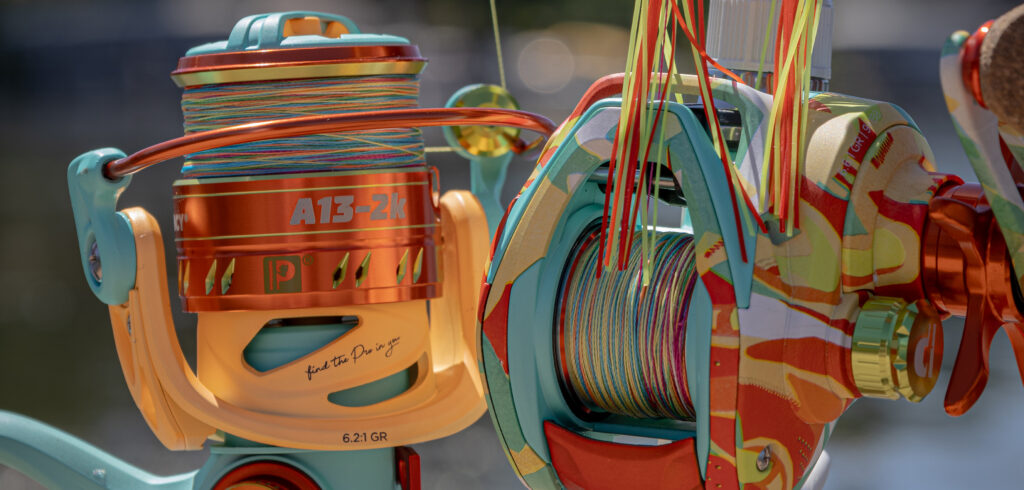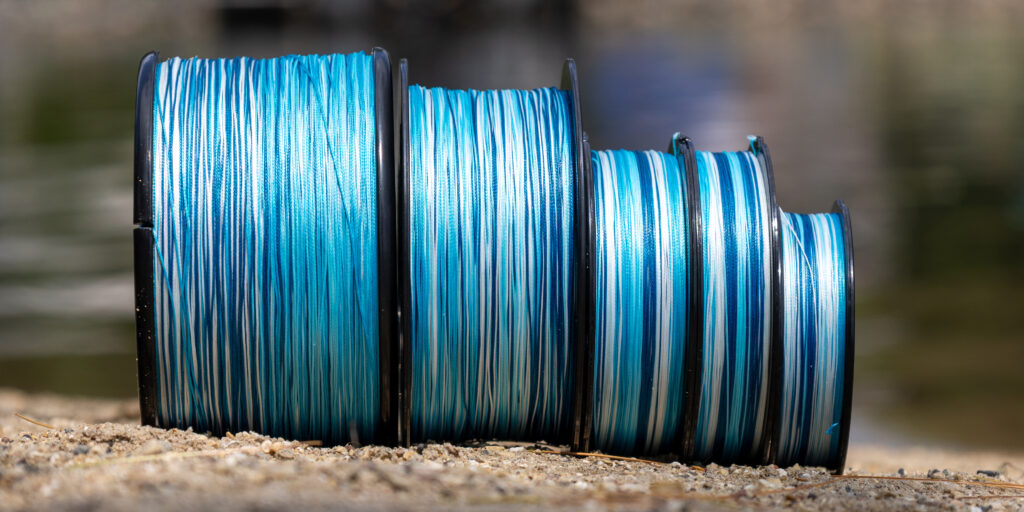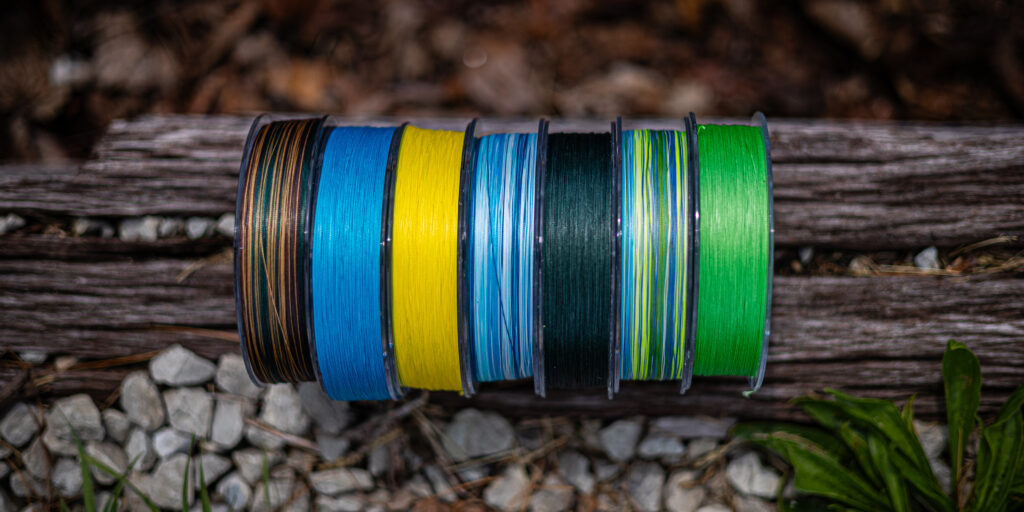Braided fishing line has become a staple for many anglers, thanks to its strength, sensitivity, and thin diameter. But what about colored braided line? Is it merely a flashy gimmick, or does it serve a practical purpose on the water? Let’s break down the realities of colored braided line—how it can impact visibility, effectiveness, and fishing strategy.
Understanding Braided Line
Before diving into color, it’s important to understand why braided line is so popular:
- High Strength-to-Diameter Ratio: Braided line can handle heavier fish while maintaining a thin profile, allowing for longer casts and better lure action.
- Zero Stretch: Offers exceptional sensitivity, letting anglers feel even the slightest bites or changes in structure.
- Durability: Resistant to abrasion from rocks, timber, and vegetation.
With these traits, braided line is a powerful tool. But what about its color?
Visibility: Why Color Matters
Colored braided lines aren’t just for looks—they can influence how fish and anglers interact with the line:
- Angler Visibility:
- High-visibility colors like bright yellow, green, or orange allow you to track line movement easily. This is especially useful for long casts, braided line with no stretch, or detecting subtle bites in low-light conditions.
- Multi-colored or segmented lines provide visual cues for depth, letting you know how far your lure has traveled or how much line is out.
- Fish Visibility:
- While fish can see lines, water clarity, light, and depth all impact whether they notice it. In most freshwater situations, braided line is thin enough that color has minimal effect on strikes.
- For clear water or finicky fish, anglers sometimes use low-visibility colors like green, brown, or gray to blend with the surroundings.
Effectiveness and Technique
Color choice can subtly influence fishing effectiveness, but it’s rarely the primary factor:
- Fluorocarbon Leaders: Many anglers pair brightly colored braid with a clear fluorocarbon leader. This keeps the line visible above water while remaining nearly invisible to fish below.
- Depth and Line Counting: Multi-colored or color-change braid every 10–15 feet helps anglers gauge depth and retrieve distance without relying on markers. This is especially handy for flipping, pitching, or deep cranking techniques.
- Seasonal Considerations: In low-light conditions, bright lines make detecting subtle bites easier. Conversely, during clear, sunny days in shallow water, a natural or darker line can reduce potential spooking of fish.

Common Misconceptions
- “Colored braid scares fish.” While some anglers worry bright lines may spook bass, most evidence and pro anglers suggest that line visibility is far less important than bait presentation and retrieve technique.
- “You need the same color everywhere.” Color choice should match your strategy: bright for visibility, dark for stealth, or multi-color for depth tracking. There’s no one-size-fits-all approach.
- “Colored line is weaker.” Line color does not impact tensile strength or performance. Quality braided line retains its characteristics regardless of hue.
Tips for Using Colored Braided Line
- Match your line color to fishing conditions:
- Stained water: Bright colors for tracking.
- Clear water: Green, brown, or low-visibility options.
- Use leaders strategically to balance visibility for you and invisibility for fish.
- Take advantage of color changes for depth tracking or lure positioning.
- Experiment with colors on different lures—sometimes, subtle differences in perception can trigger strikes.
Conclusion
Colored braided line isn’t a gimmick—it’s a tool. Its primary benefits are improved angler visibility, depth tracking, and subtle strategic advantages. While it won’t replace the fundamentals of bass fishing, understanding how and when to use colored braid can make your fishing experience more precise and effective. The real deal is that color, when used thoughtfully, enhances your control on the water without compromising performance.

FAQs: Colored Braided Line
1. Does colored braided line actually help catch more fish?
Colored braided line won’t directly increase strike rates. Its main advantages are improved visibility for the angler, easier depth tracking, and subtle strategic benefits. Proper lure presentation and technique remain more important.
2. Can bright-colored braid scare fish?
Generally, no. Most fish are more concerned with bait presentation than the color of a thin braided line. Bright lines may be more visible to the angler, but they rarely spook fish if paired with a clear fluorocarbon leader.
3. When should I use high-visibility colors?
Use bright colors like yellow, green, or orange when you need to track your line easily—such as during long casts, low-light conditions, flipping, or pitching. Multi-colored braid is also helpful for measuring depth or line out.
4. When should I choose low-visibility colors?
Darker or natural-colored braid (green, brown, gray) is best in clear water or when targeting finicky fish. These colors blend with surroundings and minimize the chance of spooking fish.
5. Does the color of braided line affect its strength?
No. The color does not change the tensile strength, stretch, or durability of the line. Quality braid performs the same regardless of hue.
6. What’s the advantage of multi-colored or segmented braid?
Multi-colored braid allows you to track line length and lure depth more easily. For example, if the color changes every 10–15 feet, you can know exactly how far your lure has traveled or how much line is out without markers.
7. Should I always use the same color of line for every situation?
No. Color choice should match your fishing conditions and strategy. Bright colors help you see your line, dark colors reduce visibility to fish, and multi-color lines aid in depth tracking.
8. Do I need a leader when using colored braid?
Yes. Many anglers use a clear fluorocarbon leader to keep the line visible above water while remaining nearly invisible to fish below, giving the best of both worlds.
9. Does colored braid affect lure action?
No. Colored braid performs the same as standard braid in terms of sensitivity, lure action, and casting performance. Its impact is purely visual and strategic.
10. Can I experiment with different colors?
Absolutely. Trying different colors can help with line visibility, depth perception, and sometimes even subtly trigger strikes depending on water clarity and lighting conditions.
- Click here to buy: Braided Fishing Line
- Click here to buy: Monofilament Fishing Line
- Click here to buy: Fluorocarbon Fishing Line
- Click here to buy: Tackle Bags
